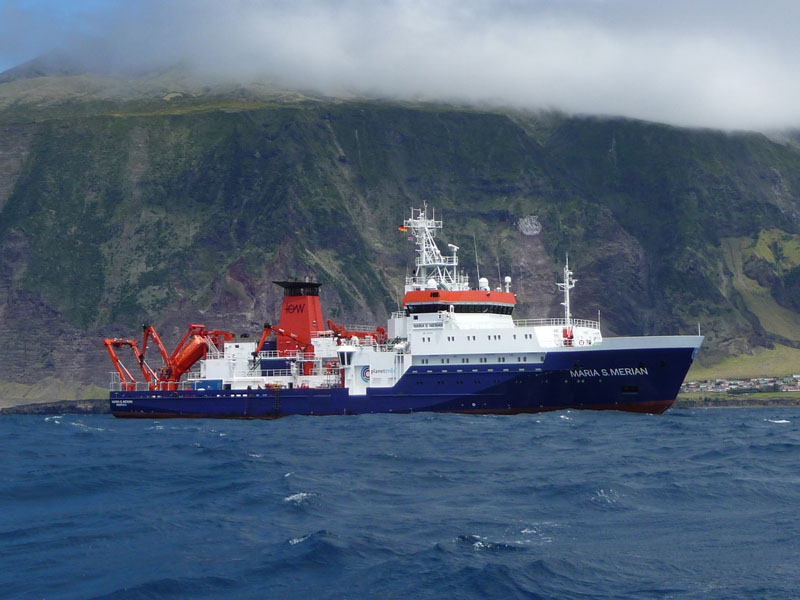MARIA S. MERIAN MSM25
- Area:
- South Atlantic Ocean
- Time:
-
24.01.2013 - 04.03.2013
- Institution:
- GEOMAR
- Chief scientist:
- Colin W. Devey
Up to now, no hydrothermal vent sites are known in the south Atlantic south of 10°S. As a result of the work in SPP1144 (From Mantle to Ocean: Energy-, Material- and Lifecycles at Spreading Axes), Devey et al. (2010) proposed a model for the relation between volcanism and hydrothermalism. We will explore in a systematic approach the Mid-Atlantic Ridge between 13°and 33°S for hydrothermal activity and plume dispersal by using combined AUV deployments and ship-based CTD casts. The cruise has the following scientific goals:
1. Testing the link between volcanism and hydrothermalism: As the time-scale of activity on the deeper parts of the ridges is likelyto be on the order of 1000's of years we need to use geography as a proxy for time - sur- veying multiple segments for hydrothermal activity to find onein the eruptive phase.
2. Testing the link between ridge morpholo- gy and strength of oceanic diapycnal mix- ing: The sampling of a large variety of ridge morphology will enable us to better under- stand the relation between mixing strength, flow properties, and bathymetric roughness. The strength of mixing above the ridge crest and in the axial valley determines to a large extent the vertical exchange of chemical species from the hydrothermal fluids and the ocean interior.
3. Large scale mapping of plume dispersal: Combined along-axis CTD (Conductivity, Temperature, Depth), plume chemistry (helium, methane, metals, rare elements), and current measurement will allow to characerize the large scale, particularly along axis, displacement of plume material and to identify possible pathways for larvae dispersal.
4. Closing the gap between 10°S and the Antarctic ridges of ridge crest explored for hydrothermal activity, a region of high importance for the definition of biogeograph- ical boundaries.
5. Refining hydrothermal plume hunting techniques: The long-range AUV (Autono- mous Underwater Vehicles) deployments coupled with ship-based CTD casts hold the possibility to survey whole segments in relatively short time-periods.



